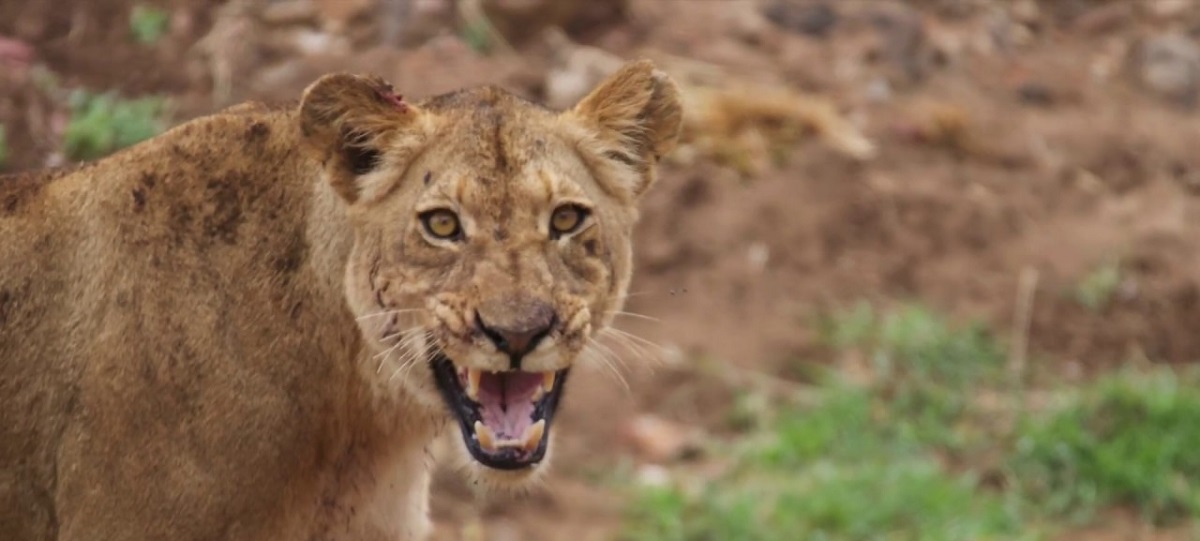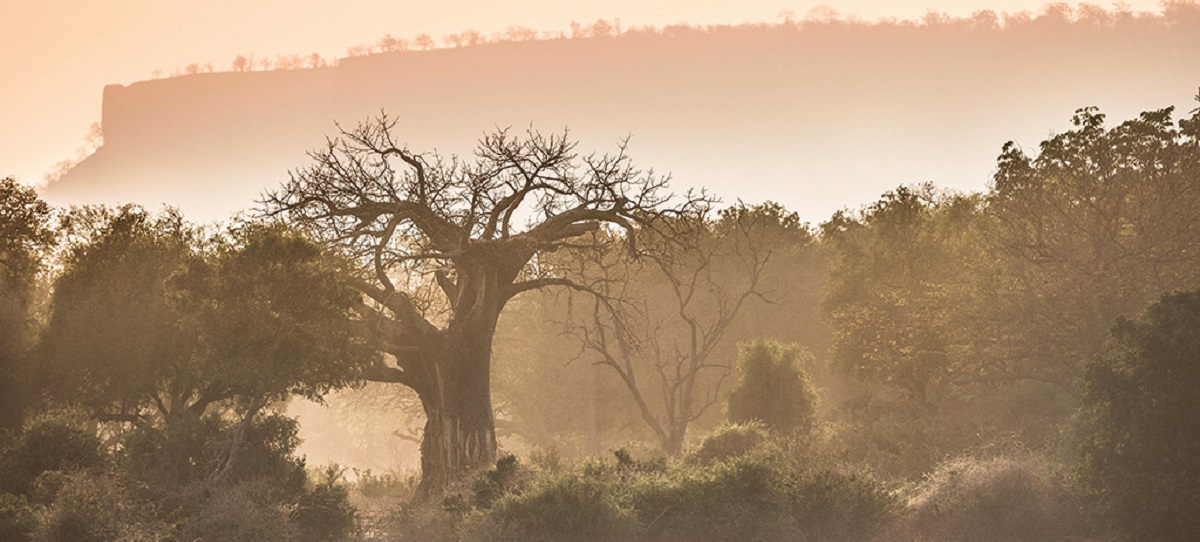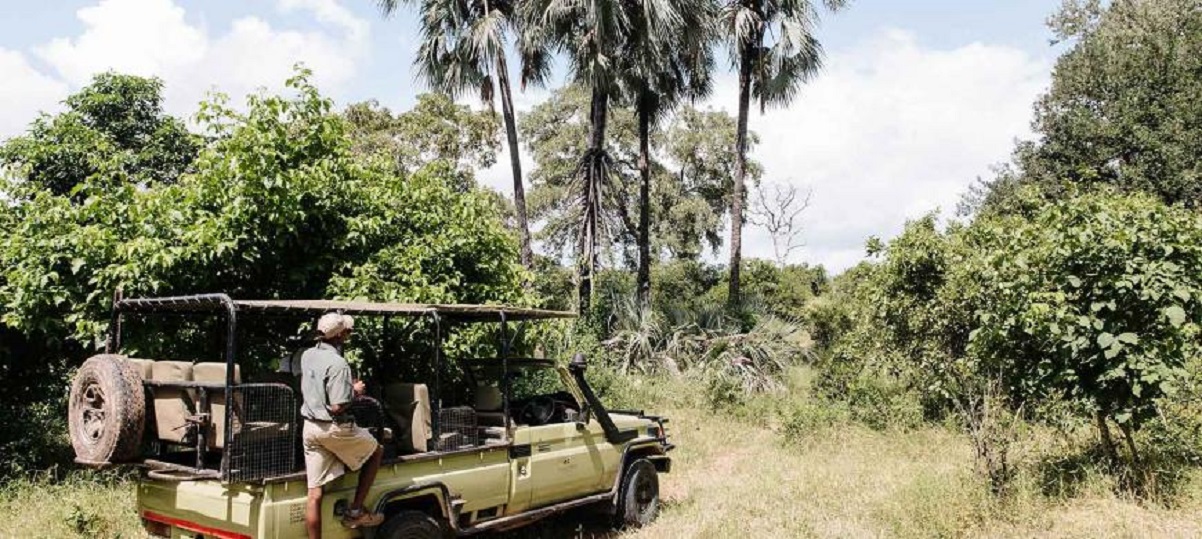Gonarezhou National Park, in Zimbabwe’s South-East Lowveld, covers just more than 5 000 km² of some of the most spectacular scenery in the region incorporating the iconic Chilojo Cliffs, wide meandering rivers and extensive woodlands. Widely known for its unique wilderness character, the Park’s reputation as a premier destination for quality wildlife sightings is also growing. Home to about 11 000 elephants, the Gonarezhou truly deserves its vernacular name as ‘Place of Elephants’.


The 5,035 km² Gonarezhou National Park is the second largest national park in Zimbabwe, and plays host to a globally significant population of African elephant, currently numbering close to 11,000 animals. The protected area was established in 1934 as a Game Reserve and proclaimed as a national park in 1975. The park is situated within the relatively remote southeast-corner of Zimbabwe on the border with Mozambique, with which it shares a 100 km boundary. The Park forms an integral part of one of the largest conservation areas in the world – the Greater Limpopo Transfrontier Park (GLTP – established in 2002), which joins some of the most iconic national parks of Zimbabwe, Mozambique and South Africa in a conservation area covering some 35,000 km². GNP also plays an important part of the Greater Limpopo Transfrontier Conservation Area (GLTFCA) which incorporates national parks, private land and concessions, and communal areas in all three countries, spanning around 100,000 km².

Structurally the GNP is dominated by various types of woodland, ranging from alluvial woodlands, to mopane woodlands on heavier soils on basalts, igneous intrusive rocks and parts of the Malvernia Beds, plus various Guibourtia and Combretum dominated woodlands, principally on the sandier soils of the Malvernia Beds but also covering much of the northern granophyre. There are additional localized occurrences of miombo (Brachystegia spiciformis, B. tamarindoides subsp. torrei and Julbernardia globiflora), Androstachys and Spirostachys woodlands to closed woodlands, plus dry forest patches (on alluvium), thickets (on the Malvernia sands), bushlands (principally scrub mopane on basalts and Malvernia Beds) and wooded grasslands (mainly on the eastern granophyre portion). Natural grasslands are virtually absent, as are Acacia woodlands, whilst aquatic systems are limited to the three main rivers, the two artificial dams/weirs, plus numerous small and mostly seasonal pans.
Floristically the area forms part of the Zambezian Regional Centre of Endemism (White, 1983), which includes all of Zimbabwe, Zambia and Malawi plus parts of Mozambique, South Africa, Botswana, Namibia, Angola, Democratic Republic of Congo and Tanzania.
A detailed vegetation study was carried out in 2010, and the report can be downloaded here. Fifty fish species have been recorded in Gonarezhou, primarily from the Save and Runde Rivers, but recent declines in water quality and flow patterns of the major rivers may have reduced this number. The killifish Nothobrancius fuzeri has historically been only found in pans of the Guluene/Chefu catchment, making it a Park endemic, but recent findings seem to suggest that its distribution also extends into the drainage system downstream into Mozambique. The Park remains it’s type locality, and probably contains the core of it’s range. Other noteworthy species include lungfish that occur in seasonal pans in the Guluene/Chefu catchment, and the Zambezi Shark and Small-tooth Sawfish, recorded at the Save/Runde confluence.
The herpetofauna of Gonarezhou is unusual in Zimbabwe, as it includes many species which typically occur on the East African coastal plain. Reptiles and amphibians, being poikilothermic and less mobile than higher animal groups, are good indicators of bio-geographic boundaries, and their occurrence in Gonarezhou illustrates the bio-geographic importance of the Park. The Gonarezhou species list includes about 6% of the Southern African endemics and 14 species of special conservation interest
The bird checklist of 400 species includes a further 92 species regarded as ‘likely to occur’. The bird list includes 13 species that are rare or of limited distribution and of conservation interest. The scrub mopane areas of the park are one of the more significant breeding sites for the Lappet faced vulture in southern Africa.
A total of 89 species of mammals in 71 genera and 31 families have been recorded from the Gonarezhou. A further 61 species, mostly insectivores or small rodents are likely to occur. Most of the work on mammalswas carried out in the 1960’s and 1970’s and there is a need to re-evaluate some of the collections. The Yellow Golden Mole and Cape Hare are only known from Gonarezhou in Zimbabwe, and the red squirrel only occurs in the southeast Lowveld of the country.
Latest estimates, (2016), for large mammals in the Park are: Elephant 10 715, impala 7 421, kudu 1 789, buffalo 4 797, zebra 1 830, nyala 187 (Gonarezhou is the only place in Zimbabwe where nyala are found in significant numbers), wildebeest 929, eland 241 and giraffe 446. The 2016 estimate of 10 715 elephants in Gonarezhou NP is only slightly below the peak estimate of 11 120 elephants during 2014, which was the highest estimate of the number of elephants in this park since sample surveys began there during 1975.
The 2016 aerial survey report can be downloaded here. Gonarezhou has twice lost its black rhino population. Records indicate that the last of the original population had gone extinct by the early 1940s. A total of 77 black rhinos were released into the Park between 1969 and 1971, with the population building to more than 100 animals, but the species went locally extinct again due to poaching by the early 1990’s.